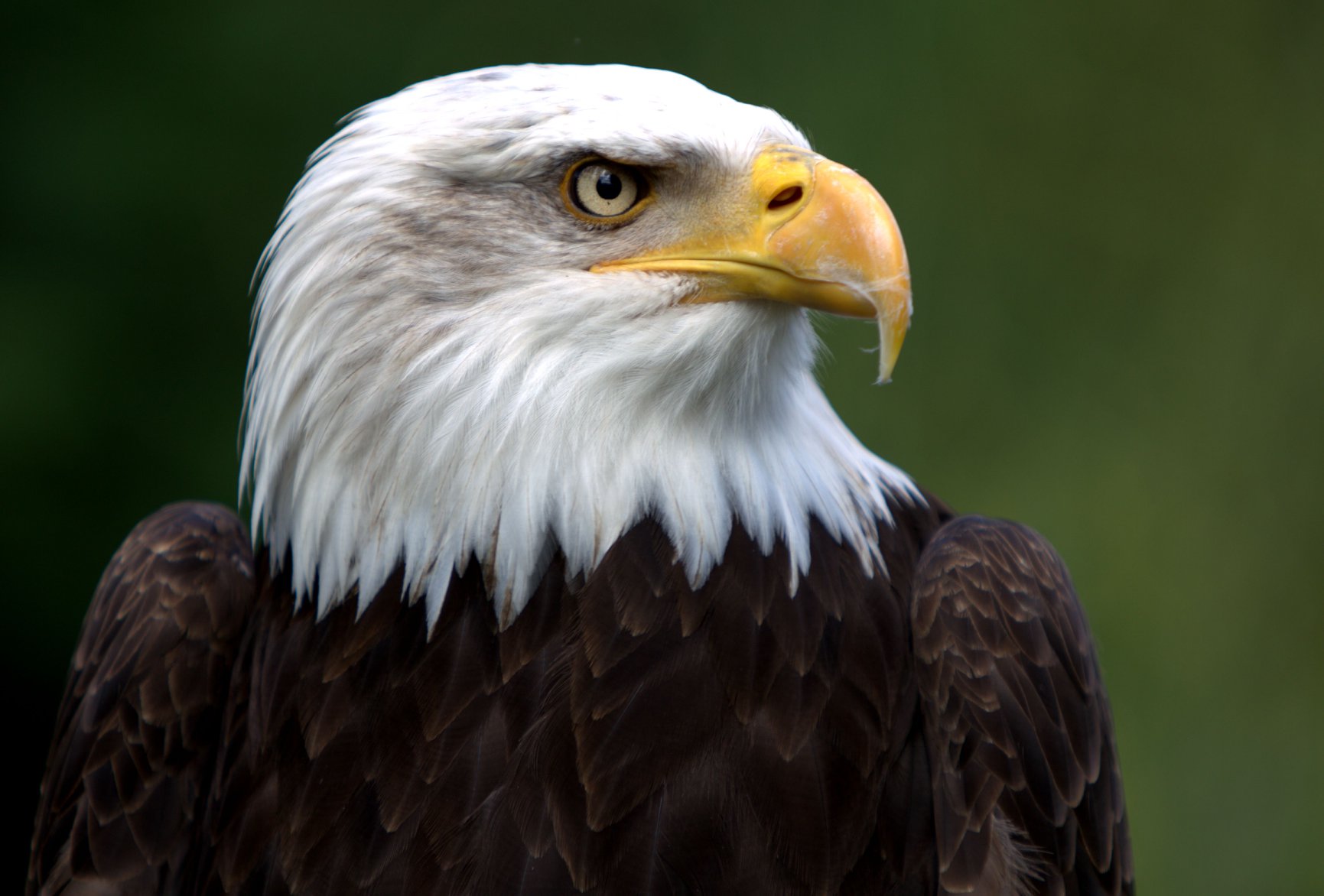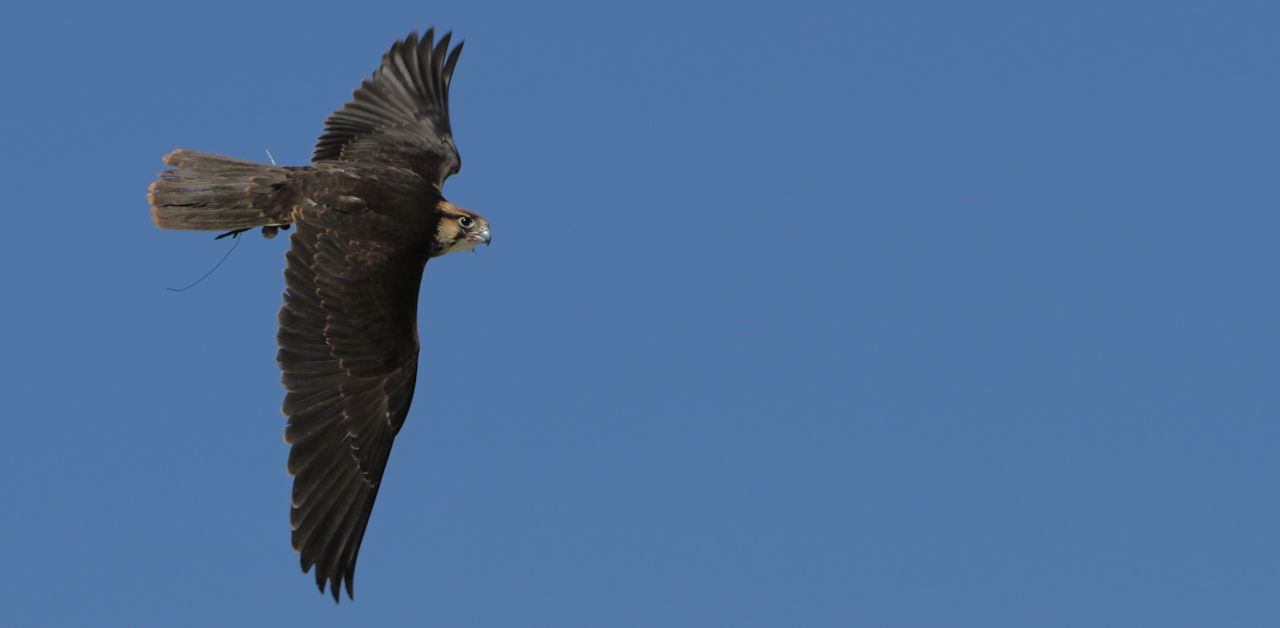Diurnal (daytime) raptors are the opposite of nocturnal (nightime) raptors (i.e. owls). The term raptor derives from the Latin word: raptare – which means to seize and carry off. Raptors use their feet to kill their prey and carry off or up to the nest, as opposed to others birds that use their beaks.
In the most recent book published on all species of diurnal raptors (Raptors of the World), 305 species are recognised. These are split into 3 scientific orders: Accipitriformes (Hawks, Eagles, Kites, Buzzards and Vultures), Sagittariiformes (Secretary Bird) and Falconiformes (Falcons, Kestrels and Caracaras). The species range in size from the Lappet-faced Vulture and Eurasian Black Vulture weighing around 12kg (24 lbs) to the White-fronted Falconet weighing around 35 grams (1.25 oz). The majority of species are purely carnivorous with most catching living animals, although nearly all will scavenge if carrion is available. In general different groups have evolved various adaptations and techniques for catching varied prey.
While it may sound cruel that these birds only survive by hunting, killing and eating other animals they actually help keep the natural balance. Predators usually capture weak and sick animals, which are easier to catch. In this way they help healthy animals survive by preventing the spread of disease. Predators also help keep the population of prey animals under control – if there were too many animals there would not be enough food for them all. Raptors can help farmers because they catch rats and mice and other animals that destroy crops for human food. The species that feed on carrion also help to clean up the environment by consuming the carcasses which also helps to prevent the spread of diseases.

Raptors encounter many problems to ensuring their survival. Prey has to be located and then caught efficiently. They are vulnerable to predation while feeding on the ground and therefore reducing this time is advantageous. Species have evolved not compete with each other; if two species catch the same prey, they will usually be found in different habitats (in ecological terms they exist in different niches). Most raptors are limited by the abundance of prey, but also by nest site competition within their species and between species.
Adaptations
Feet and Talons
The feet and talons are essential for killing and carrying their prey. The legs and feet are usually covered in scales and are normally yellow in colouration. They have four toes with three facing forward and one back. The back and front inside toes are the thickest and are therefore the strongest. The power in the feet is the most important factor to catch the prey and hold on to it before it is killed. Most raptors only use the power in the feet for this, but some also use their beaks to help in dispatching their prey.
The comparative sizes of the feet give and indication to the type of prey species a bird catches. Raptors with short, thick toes have powerful feet and tend to feed on mammal prey (e.g. Common Buzzard). Long slender toes tend to indicate that a species catches birds (e.g. Sparrowhawk and Peregrine Falcon). Vulture’s feet are not powerful as they are mainly feeding on carrion.
The length of the leg of a bird can also indicate the prey type, longer legs mean faster feet and therefore show they catch more agile prey like birds and insects. One exception to this is the Secretary Bird with long legs for stamping on snakes. Most raptors have adapted the same technique for catching prey: the prey is hit by the feet at a higher speed than the bird is actually moving. This is achieved by the pelvis being thrust forwards a few seconds before contact with the feet swinging forward in front. Studies have found the pelvis of raptors to be moving 20-40% quicker than the head just before impact on prey and the feet moving15% quicker than the pelvis (ref. 1). The coordination and reaction times are also amazing and corrections will be made in milliseconds.

Beak
All diurnal raptors have a curved beak. The beak is also known as the mandibles with curve of the upper mandible extend past the lower. This hook is an adaptation for feeding and tearing on tough skin and flesh. The point hooks into the flesh and when the bird pulls up all the body muscles are used to help tear.
A vulture’s beak is particularly strong as they must be able to rip open thick skin of very large animals (unless a mammalian predator has done the work for them!). A falcon also has a powerful bite. They possess a notch or tooth (known as the tomial tooth) on both mandibles that fit into the vertebrae of their victim and it is instantly killed with a quick bite and twist (some kites also have this notch).
Eyesight
The eyesight of birds of prey is well known for being amazing. We have the sayings: “you’ve got eyes like a hawk” and “…watching you like a hawk”. Comparatively in size, nearly all birds have better eyesight than mammals. The central point of vision in our eye is known as the fovea. We have lots of light sensitive cells (cones) very densely packed in this small area (200,000per mm2). A Common Buzzard has been found to have over 5 times as many cells in their fovea. What is also amazing is that birds of prey along with most birds have two fovea in each eye (compared to one in ours). This means they can see out to the sides as well as directly in front of them. In front the fovea cross-over and give binocular vision (which is also true of us). The outside fovea of a bird are more for detecting movement. Each eye has a 170o field of vision with the to overlapping around 45-55o for the binocular vision (ref. 2). Behind the head is a blind area of around 70o, but diurnal raptors are able to turn their head nearly 180o to see behind. This gives them full 360o vision. Raptors also have an adaptation to keep their heads motionless while the body is moving. This enables them to keep focused on their potential prey.

In the past 20 years it has been discovered that many species of bird, unlike humans, can see into the Ultra-violet (UV) range of light. UV vision has not been found in all species of raptor but as it exists in some its is likely to occur in all species. One species of raptor known to use this light for hunting purposes is the Common Kestrel. Rodents do not have a bladder so they leave a urine trail behind them in the grass. Amazingly their urine reflects UV light and a kestrel can then follow the trail to locate their prey. So a hovering kestrel is actually looking for rodent urine!
Hearing
Raptors have good hearing, and is approximately the equivalent to ours. The ears are holes located behind and underneath the eyes on either side of the head. They are usually hidden by feathers- except in the case of the Vultures.
Some raptors use their hearing for locating their prey. Harriers use both hearing and vision for detecting prey. They have a facial disk formed from enlarged feathers- this helps to funnel sounds into the ears. The ears are asymmetric (different places) on each side of a Harrier’s head and therefore sounds reach the ears at different times and enable them to locate prey more easily (see also Owls). The South American Forest falcons also have large ear openings like owls to help them locate prey at dusk and dawn (crepuscular hunters).
Olfactory Sense
Diurnal raptors have never been recorded having a sense of smell. One species of bird that has a very good sense of smell is the Turkey Vulture but this species along with the other American Vulture species have been reclassified. Please see our page on Vultures for more information.
Digestive System
Diurnal raptors along with many other species of bird possess a crop. This is a storage pouch located in the throat area that enables a bird to consume a large amount of food quickly and then digest it later. The stomach is large and thin walled compared to seed-eating bird species. Diurnal Raptors can digest more from prey than owls as their stomach is more acidic (lower pH of 1.5). This means that the smaller bones can be digested. The muscular stomach aids in the production of the compact pellet which is regurgitated after digestion is complete. As meat is high in water content (approximately 70%), diurnal raptors do not need to drink large quantities of water, but they do use it for bathing regularly.
Wing Shapes

Each species of raptor has evolved to catch prey in different ways and individuals within a species may learn different techniques. The general shape of the three largest groups of raptor fit into three categories: Broad-winged, Short-winged and Long-winged.
- Broad-winged: These are mostly Buzzard species and Booted Eagles. The wings are long and broad and generally have fingered-like tips at the edges. This group mostly catches ground living prey, but will catch aerial prey.
- Short-winged: These birds are usually found in Accipiter genus or true Hawks. These birds have short round wings and a long tail. They are mainly woodland hunters and the short wings enable them to pull them in quickly to avoid trees and give quick acceleration. The long tail gives them agility. This group generally catches avian prey on or very close to the ground.
- Long-winged: These are most of the group of falcons. The long narrow pointed wings give the bird speed to catch fast moving aerial prey.
Birds of prey try to save as much energy as possible while flying and so they use various methods to gain height with very little effort. One method is to use thermals (warm air currents) rising from the ground and the bird can circle effortlessly up so it can search over a larger area for food. Species that migrate also use thermals for travelling long distances. Raptors also use the wind currents around hills and cliffs to gain height.
Reverse Sexual-sized Dimorphism (RSD)
It is known that in many mammalian species the male is larger than the female, it is also true in many bird species. For some reason in predatory birds (diurnal raptors, nocturnal raptors and skuas) it has evolved to be the other way around – the female is the larger sex. This sized difference has been named “reverse sexual-size dimorphism”, as it is opposite to what is expected. The debate as to why has been ongoing in scientific literature for many years and many suggestions have been put forward, but then others try to prove them wrong. In truth known one knows exactly why and we will probably never know. Nature is amazing and some things just are.
One relatively recent theory is that the male being smaller is more efficient in flight than the larger female. This has been proved in wind tunnels with the Harris Hawk. The male has to find food for himself, the female and the young chicks, so there is an advantage in being more efficient. Another theory (and the most plausible) is that the size difference means that the sexes do not compete with each other, i.e. they catch different sorts and size prey. The species of diurnal raptor that show the greatest dimorphism is the ones that catch more agile prey, mainly birds. Species that catch slower moving prey have less dimorphism and the Old World Vultures are very often the same size.
References to Diurnal Raptors:
- Cade T (1982) Falcons of the World. Cornell University Press, New York.
- Ferguson-Lees J. and Christie D.A. (2001) Raptors of the World. Helm, London
1. Goslow G. E. (1971) The attack and Strike of some North American Raptors. Auk 88: 815-827
2. Fox (1995) Understanding the Bird of Prey
